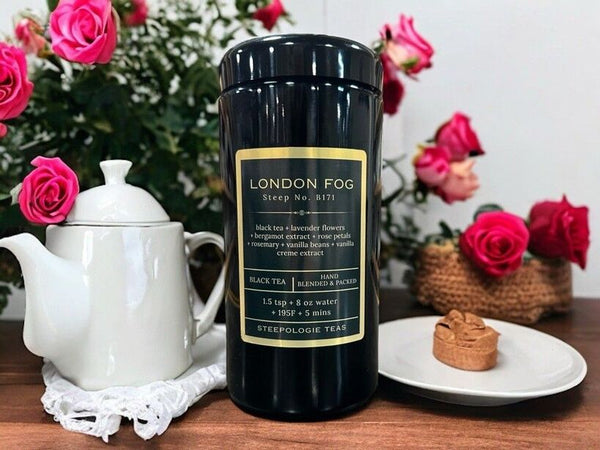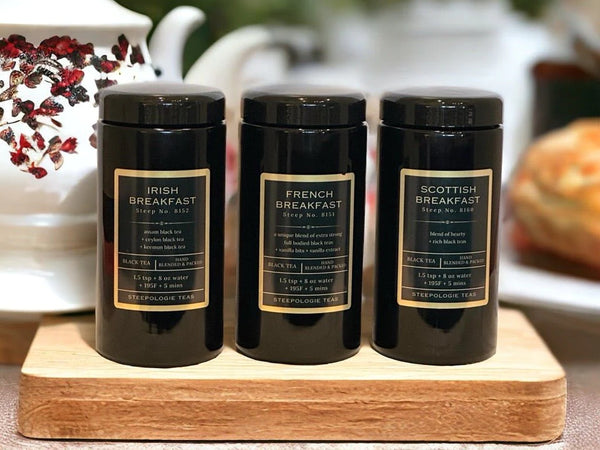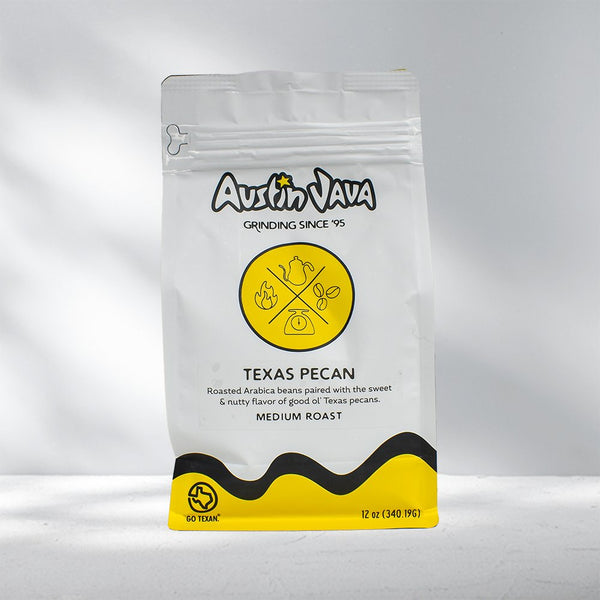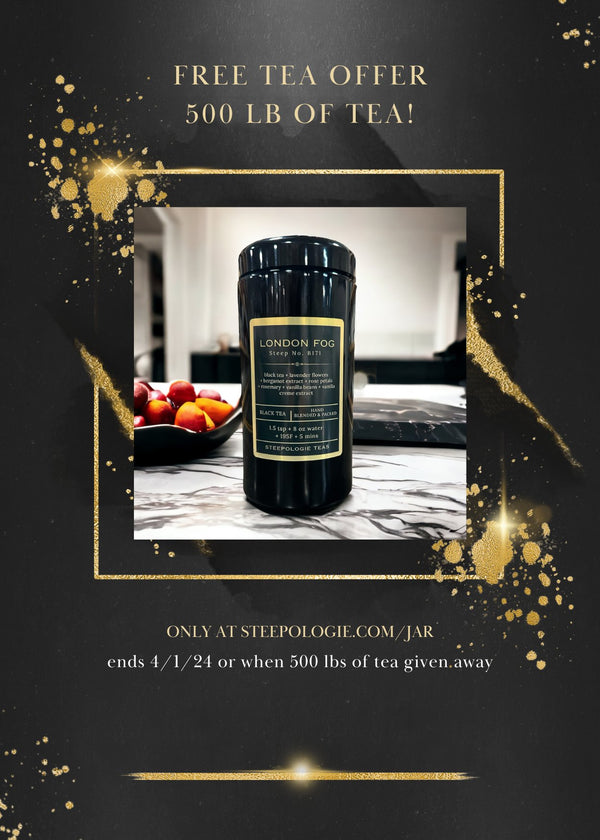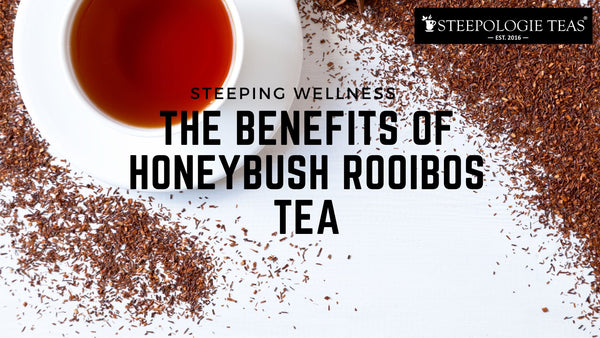
To Add or Not: How do you take your tea?
The classic tea lover question is "How do you take your tea?". For the tea enthusiasts the question becomes something like "What's your preferred tea ritual?" Either way, answering this seemingly simple question can be as diverse as the myriad of tea varieties available.
While personal taste plays a pivotal role in tea enjoyment, there are overarching principles that enhance the overall tea-drinking experience for specific tea types. For those venturing into the world of tea or exploring a novel tea variety, this article delves into a some most-loved teas, examining whether they are best savored in their pure form or enhanced with additional ingredients. The question really is: Straight, milk, sugar, milk and sugar? Let's dig in to some of our favorite steeps and how we suggest to take it:
Earl Grey Teas
How to take it: any way you like!
In broad terms, black teas readily accommodate additional ingredients, given their robust flavor profile, ensuring that the distinct tea taste remains prominent amidst new flavor enhancements. A common practice involves adding a touch of milk to black tea to soften its intensity. While Earl Grey possesses a natural appeal that doesn't necessitate toning down, some tea enthusiasts relish the option to customize their cup by incorporating milk, sugar, or even a hint of lemon. The choice is yours: savor Earl Grey in its pure form or tailor your tea experience to your liking!
Chai Teas
How to take it: add sugar and cream
Feel free to enhance your Chai tea experience by adding milk, honey, and various sweeteners – it's not just accepted; it's encouraged! While some individuals prefer their Chai in its pure form, many find delight in blending it with milk, sugar, honey, or even brown sugar and syrups. In fact, a favored method of preparing Chai teas involves steeping it directly in milk on the stove, which should really be done with a stronger traditional chai like our Masala Chai. All of our chai teas offer ample room for personalization, so don't hesitate to experiment with your preferred additions!
Rooibos
How to take it: any way you like!
The question of whether to add milk and sugar to Rooibos tea is a matter of personal preference, and the choice often depends on the desired flavor profile and one's individual taste. Rooibos tea, also known as red tea, hails from South Africa and is celebrated for its naturally sweet and nutty notes.
One of the distinctive characteristics of Rooibos is its inherent sweetness, making it a popular choice for those seeking a naturally sweetened beverage without the need for added sugars. Therefore, many Rooibos enthusiasts prefer to enjoy it in its pure form, without the addition of sugar or sweeteners.
On the other hand, the question of adding milk to Rooibos is a less common practice compared to traditional black teas. The beauty of Rooibos is that you can add milk and it won't curdle like it will in most herbals - a win for caffeine free lovers! Rooibos has a mild and delicate flavor, and the addition of milk may overpower its natural taste. However, some individuals appreciate the creamy texture that milk can lend to rooibos, creating a unique and comforting beverage.
Straight Green Teas
How to take it: straight
With the exception of our Organic Japanese Matcha when in lattes and our Imperial Gunpowder green teas (both discussed below), we do not recommend adding anything to straight green teas due to their flavor profiles. In particular, Japanese green teas offer a truly distinctive experience. For example, a sip of our freshly steeped Sencha Fancy unveils a vegetal and grassy profile reminiscent of a delightful spring day after the lawn has been mowed. Introducing elements like milk or sugar may diminish this unique experience. Similarly, our Organic Kabusecha and Organic Japanese Gyokuro are best served straight to truly appreciate these traditional green teas.
Organic Japanese Matcha
How to take it: straight cuppa, add to latte!
Allow us to clarify: if you opt for a premium hot cup of matcha, such as our Organic Japanese Matcha, its delicate flavor may be overshadowed by additions like milk or sugar. Also, people got used to asking for milk and sweetener at cafes because they typically use lower grade Chinese matcha which is bitter. Our Organic Japanese Matcha is smooth and doesn't need additives to mask the taste. However, if you're looking to make a Matcha Latte than adding milk and sugar is 100% the way to go!
Imperial Gunpowder
How to take it: straight, unless...
While we generally advise against adding anything to straight green teas, our Imperial Gunpowder Tea stands out as an exception in certain situations. Enjoyed on its own, our Imperial Gunpowder Tea boasts a robust profile with a subtle smokiness that's not overwhelming. However, this tea takes on a different role in our Moroccan Mint Tea, where we blend our gunpowder with peppermint, creating a refreshing concoction often best sweetened to bring out the minty flavor. Some enthusiasts even opt to enhance the experience by adding a touch of lemon.
Lapsang Souchong Black Tea
How to take it: milk and sugar please!
Lapsang Souchong elicits strong reactions – some tea lovers will only drink this smoky tea or it's cousins like our Smoky Chai while others swear they'll never try it again due to its strong smoky taste. Whether you appreciate its smoky and piney notes or find them overpowering, it's a distinct steep that divides tea enthusiasts around the world. Adding milk and sugar to Lapsang Souchong is encouraged to temper its intense flavor profile, but we have a lot of customers who take this tea straight (they tend to also be whiskey lovers!).
Darjeeling Black Tea
How to take it: straight, hard stop!
The "Champagne of Tea'" stands on it's own. Darjeeling, despite being a black tea which is generally known for its compatibility with additional flavors, stands out because it's a mild black tea with subtle and nuanced notes. These delicate flavors risk being overshadowed by the introduction of milk, honey, sugar, and the like. Whether you're sipping on our Organic 1st Flush Darjeeling or Organic 2nd Flush Darjeeling, it's strongly recommended to reserve the milk and honey for a bolder black tea. If you can't help yourself, best to not let tea enthusiasts know what you're doing lest you may get an earful!
Organic Golden Monkey King Black Tea
How to take it: straight
It might seem unusual to advise against adding anything to black tea, given its robust nature that typically accommodates milk, sugar, or honey without compromising flavor. However, akin to our Darjeeling teas discussed above, numerous Chinese black teas boast a mildness that risks losing its nuanced flavors when combined with additional ingredients. Our Organic Golden Monkey King has a gentle profile, featuring a subtle cocoa essence, that requires no additions – it's perfectly enjoyable just as it is so steep, serve and enjoy!

